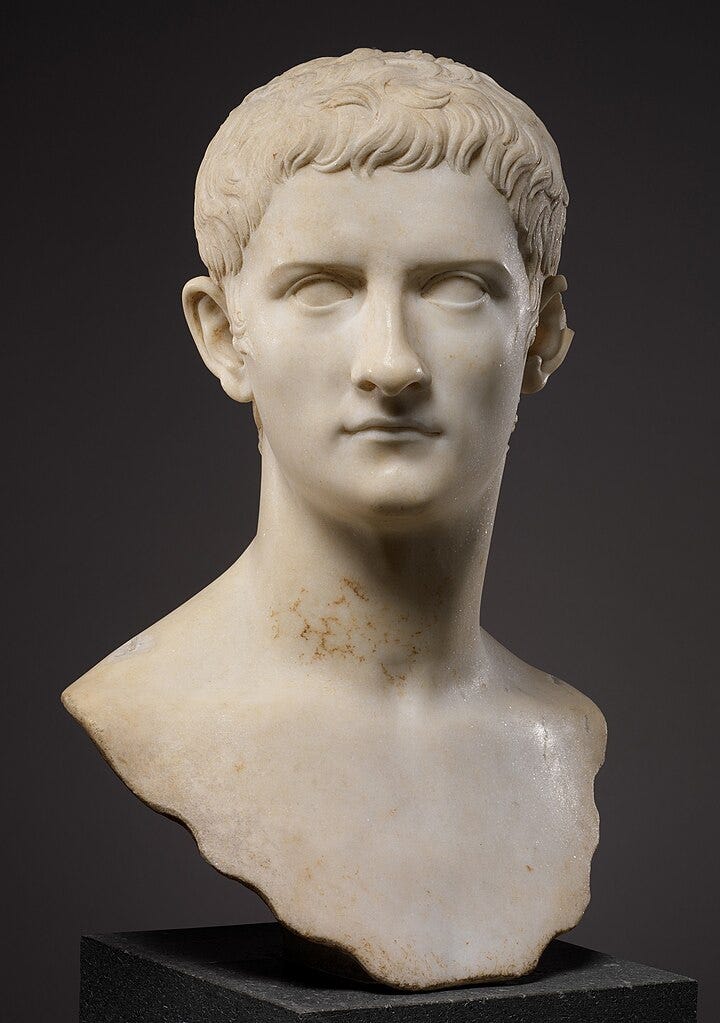Unearthing Caligula's Lake Nemi Ships and Their Secrets
Written on
Chapter 1: The Colorful Reign of Caligula
Emperor Caligula stands out as one of the most notorious figures in Roman history, with a life story that spans a tumultuous childhood, a promising reign, and eventual madness. Reports suggest that he suffered from a brain disorder that influenced his erratic decisions. Despite recovering, his later choices raised eyebrows, including plans to level mountains and construct dams in tumultuous seas.
Caligula's legacy remains a topic of intense scrutiny, particularly concerning his personal conduct. His reputation for promiscuity is well-documented, with claims of relationships not only with numerous women but also with his own sisters and various men.
Section 1.1: The Legacy of Caligula's Ships
What enduring artifacts did Emperor Caligula leave behind? The so-called "mad emperor" is remembered for two ships, both intentionally sunk in Lake Nemi after his death. Fishermen in the area were aware of these vessels for centuries. However, it wasn't until 1446 that Cardinal Prospero Colonna and Leon Battista Alberti began investigating these shipwrecks, though their efforts were hampered by a lack of technology to salvage them from depths exceeding 18 meters. Unfortunately, initial attempts to recover the ships led to further damage.

The wrecks were finally recovered during the interwar period, but disaster struck in 1944 when an artillery shell hit the museum where they were displayed, leading to their destruction. Recently, a stone head was discovered in Lake Nemi during dredging activities. This intriguing find has sparked curiosity, as preliminary studies suggest it dates back to the 1st century AD, coinciding with Caligula's reign. There is speculation that it may have adorned one of his fabled ships. The Nemi City Council has contacted relevant authorities to conduct further research.
Section 1.2: Characteristics of the Lake Nemi Ships
The first ship, known as the Prima nave, measured 70 meters in length and 20 meters in width, while the Seconda nave was slightly larger at 73 meters long and 24 meters wide. According to Roman historian Suetonius, each ship boasted ten rows of oars and featured luxurious amenities such as baths, galleries, and salons. Supplies on board included an assortment of vines and fruit trees.
Models illustrating what these grand ships may have looked like can be found at the Museum of Roman Ships, while the surviving pieces are housed in the National Museum of Rome.
Chapter 2: The Allure of Sunken Ships
The fascination with sunken ships has captivated underwater archaeologists and historians for centuries. A prime example is the wreck of the Endurance, which belonged to Sir Ernest Shackleton and sank in 1915 off Antarctica. Discovered over a century later, the ship's story has become legendary.
Other notable sunken vessels include the 18th-century warship Queen Anne’s Revenge, once commanded by the infamous pirate Blackbeard, which was discovered off the coast of North Carolina in the 1990s. Over 250,000 artifacts have been recovered from its remains.
The Vasa, a 17th-century Swedish warship, was another notable wreck. Intended to be a state-of-the-art battleship, it tragically sank during its maiden voyage in 1628, only to be raised in 1961. Today, it draws nearly a million visitors annually as a museum piece.
Thank you for engaging with this exploration of Caligula and the treasures of Lake Nemi! Your support through claps, donations, or tips is invaluable in helping me create more insightful content.

